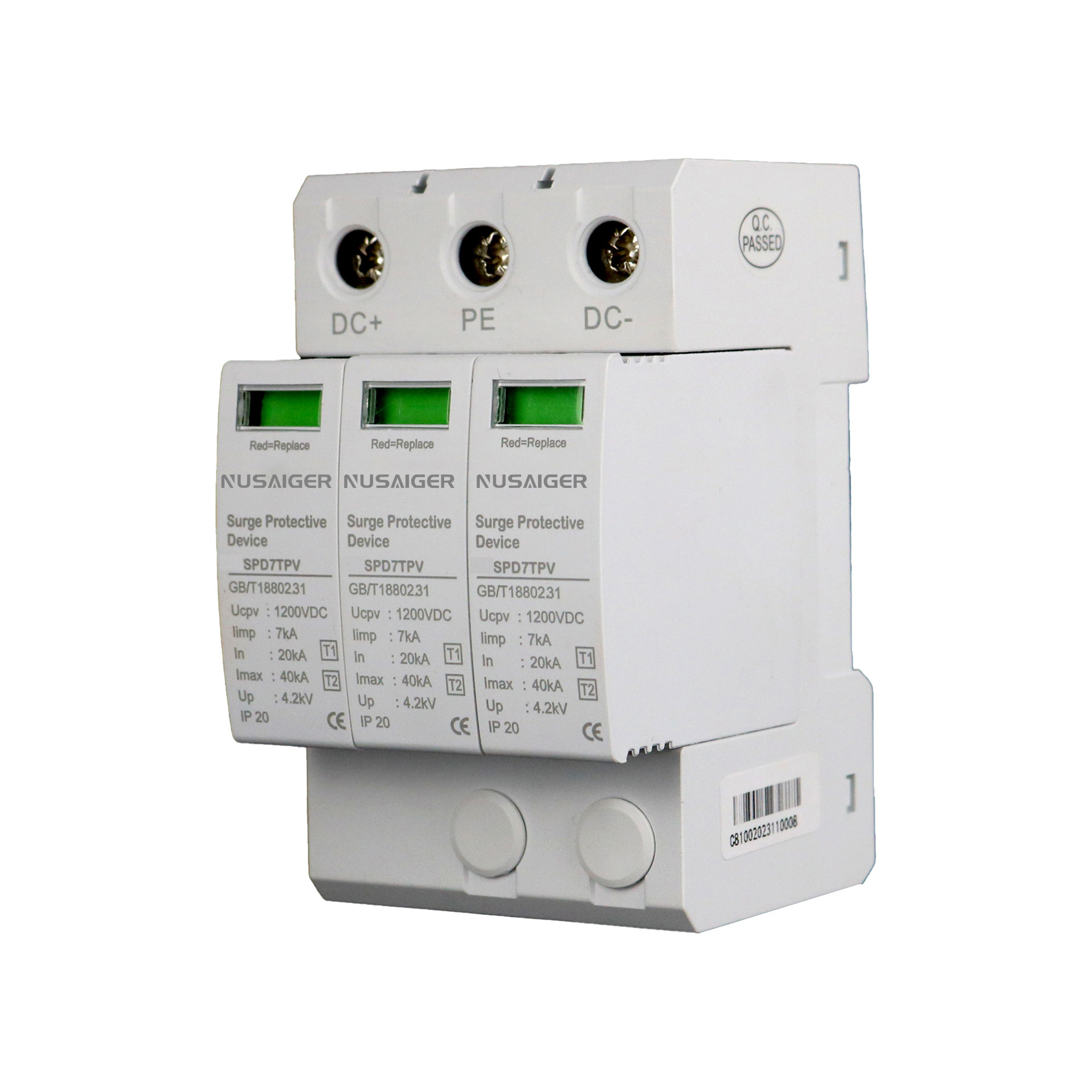Understanding Surge Protective Devices: Types, Selection, and Installation Best Practices
1. Introduction
Electrical surges can occur unexpectedly and cause severe damage to electronic devices and critical equipment.
A Surge Protective Device (SPD) is essential for preventing such damage and ensuring system reliability.
This guide provides an in-depth understanding of SPDs, their types, applications, selection criteria, and installation best practices.
Whether you are an electrical engineer, facility manager, or homeowner, this article will equip you with practical knowledge to make informed decisions about surge protection.
2. How Surge Protective Devices Work
SPDs are designed to respond to transient voltage spikes by diverting the excess energy away from connected equipment.
The key components of most SPDs include:
- Metal Oxide Varistors (MOVs): These absorb high-energy surges and limit voltage peaks.
- Gas Discharge Tubes (GDTs): Used for high-energy surges, they ionize gas to conduct surge current safely to ground.
- Transient Voltage Suppression (TVS) Diodes: Provide fast response times for low-energy transients.
When a surge occurs, the SPD instantly redirects the current to the grounding system, preventing it from reaching sensitive devices.
After the surge passes, the SPD returns to standby mode, ready for the next event.
3. Types of Surge Protective Devices
SPDs are categorized based on their installation point and the type of surges they are designed to handle.
3.1 Type 1 SPDs
Installed at the service entrance, Type 1 SPDs handle high-energy surges from direct lightning strikes and utility grid disturbances.
They are robust and can withstand very high currents.
3.2 Type 2 SPDs
Type 2 SPDs are installed at distribution boards to protect circuits from indirect lightning strikes and switching surges.
They are the most widely used in residential and commercial applications.
3.3 Type 3 SPDs
Type 3 SPDs provide fine protection near sensitive equipment.
Examples include surge-protected power strips, point-of-use devices, and specialized industrial SPDs.
3.4 Combination SPDs
Some manufacturers provide combination SPDs that cover multiple protection levels, such as Type 1+2 or Type 2+3.
This layered protection strategy is recommended for critical applications.
4. Key Benefits of Installing SPDs
Installing SPDs provides multiple benefits for both residential and industrial environments:
- Equipment Safety: Prevents damage to computers, servers, appliances, and industrial machinery.
- Fire Prevention: Reduces the risk of fires caused by overheated electrical wiring during surges.
- Business Continuity: Minimizes downtime and protects mission-critical systems.
- Cost Savings: Reduces replacement costs of expensive equipment.
- Compliance: Meets standards such as IEC 61643, UL 1449, and IEEE for industrial and commercial systems.
5. Common Causes of Electrical Surges
Understanding the sources of surges helps in designing an effective protection plan:
- Lightning Strikes: Direct or nearby strikes induce powerful surges in electrical systems.
- Utility Switching: Power restoration or switching operations can create transient spikes.
- Large Appliance Cycling: Motors and HVAC systems create switching surges when turned on/off.
- Wiring Issues: Faulty grounding and damaged cables can amplify surge effects.
- Electrostatic Discharge: Can damage sensitive electronics even at low energy levels.
6. Selecting the Right SPD
Choosing the correct SPD involves understanding your system’s requirements:
- Nominal Discharge Current (In): Indicates how many times the SPD can handle a surge without damage.
- Maximum Discharge Current (Imax): Highest surge current the SPD can safely absorb.
- Voltage Protection Level (Up): Maximum voltage allowed to pass through to equipment.
- MCOV: Maximum Continuous Operating Voltage ensures the SPD can handle regular voltage.
- Response Time: Faster SPDs offer better protection for sensitive electronics.
- Indicator Mechanism: LEDs or alarms to indicate end-of-life or failure.
7. Installation Best Practices
Correct installation is crucial for SPD performance:
- Place SPDs as close as possible to the main distribution board to reduce lead length.
- Ensure proper grounding with low impedance paths.
- Use adequately sized conductors to handle surge currents.
- Combine multiple SPD types for layered protection.
- Follow local electrical codes for safety compliance.
8. Maintenance and Lifespan
SPDs degrade over time and require periodic maintenance:
- Inspect SPDs regularly; check visual indicators or LED status lights.
- Replace SPDs after major surge events.
- Record replacement cycles for critical systems.
- Consider SPDs with remote monitoring for industrial or data center applications.
9. Layered Protection Strategy
For maximum protection, a multi-level approach is recommended:
- Type 1 at the service entrance.
- Type 2 at distribution boards for branch circuits.
- Type 3 near sensitive equipment like computers, servers, or medical devices.
This approach ensures surges are mitigated at each stage, reducing risk of damage to connected devices.
10. Applications of SPDs
SPDs are widely used across residential, commercial, and industrial environments:
- Homes: Computers, entertainment systems, security systems.
- Offices: Data centers, servers, office electronics.
- Industrial Plants: Automation systems, industrial motors, sensors.
- Renewable Energy: PV systems, wind turbines, battery storage.
- Telecommunications: Base stations, fiber networks, 5G infrastructure.
11. Common Installation Mistakes to Avoid
- Placing SPDs far from the main panel.
- Poor grounding or inadequate bonding.
- Not coordinating SPD types (Type 1/2/3) effectively.
- Choosing SPDs with insufficient surge ratings.
- Neglecting replacement of SPDs after major surge events.
12. Future Trends in Surge Protection
Modern trends are reshaping SPD design and application:
- IoT-enabled SPDs with real-time monitoring and predictive alerts.
- Hybrid SPDs combining MOV, GDT, and TVS for superior protection.
- Compact SPDs for space-constrained installations and advanced electronics.
- AI-driven predictive maintenance for industrial and critical systems.
13. Conclusion
Surge Protective Devices are indispensable for protecting electrical systems and sensitive equipment.
Understanding the types, proper selection, installation, and maintenance ensures optimal protection
for homes, offices, industrial facilities, and renewable energy systems.
By implementing a layered surge protection strategy, you can minimize equipment damage,
prevent downtime, enhance safety, and reduce replacement costs.



